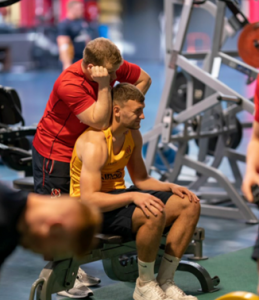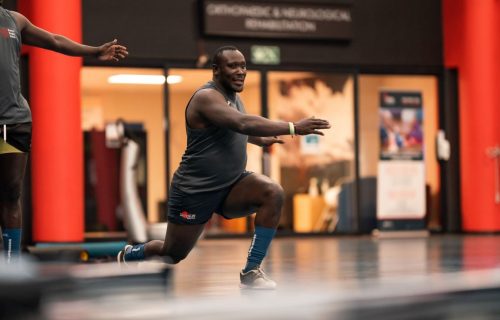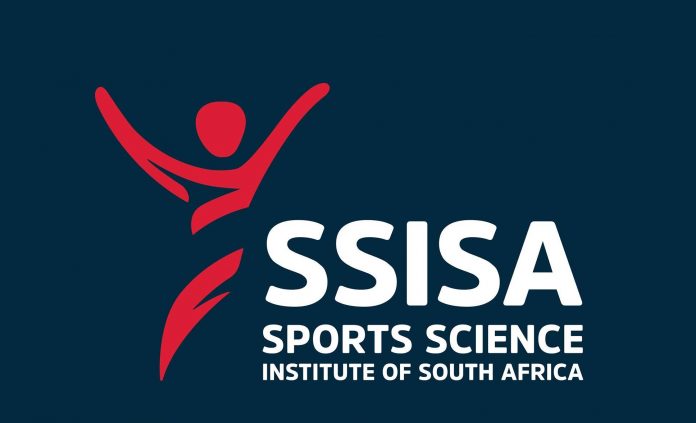Due to the inherent nature of the sport injuries are bound to occur in rugby. Common injuries that effect rugby players can be broken into two different categories namely acute injuries and chronic injuries. Acute injuries are injuries that players usually experience in a game on the field. There is usually no build up to the occurrence of these injuries and they are sudden such as a concussion, torn muscle or broken bone.
On the other hand rugby players can experience chronic injuries. These are injuries that develop over time such as overuse injuries like tendinitis. These injuries can be prevented through well-structured player management programmes and good support staff for the coaches.
Ideally when a player gets injured on or off the rugby field there should be a clear referral process that occurs. Players and staff should be aware of the process that should occur.
Injury Detection Process:
Once a player is injured, they should be checked out by the team medical staff or doctors. The team doctor will then make a call if the player needs to be referred to a specialist for further assessment. If not, the player will be acutely treated by the doctor and referred to the team physiotherapist who will do the required rehabilitation work. Once the physiotherapist is happy that the player can start to load the tissue or joint a bit more they will pass the player on to the team biokineticist or strength and conditioning coach. It is here that the player will be required to perform a return to sport assessment and if passed can resume training as normal and be considered for selection.
It is very important that a player is not rushed back after injury as this can cause the injury to reoccur and possibly result in the player being out of the game for longer. It may be tempting for some coaches to want to bring back better players sooner but due process should always be followed for player welfare.

Below is a list of injuries and the estimated time it takes to complete the rehabilitation for them:
- Muscle strain
- this can be due to overuse or acute fatigue but is essentially it is when a muscle is pushed beyond its physical limit and becomes torn. Depending on the severity of the tear it is graded 1 to 3
- the player could be out for as little as 2 weeks with a grade 1 strain or as much as 3 months with a grade 3 strain.
- Concussion
- This is mainly an acute injury due to sudden impact to the head or neck. There are very strict rules in the tackle and scrum nowadays in order to mitigate the risk of concussion in rugby player. Additionally, the rules on the recovery and return to sport after suffering from a concussion are very strict.
- The rules around a concussion state that a player that suffers from head trauma needs to be evaluated by a doctor as soon as possible and may not play rugby or participate in training for three weeks. Following this they may undergo a medical examination again to declare them fit to play.
- Broken bones
- This is when a fracture occurs to the skeletal frame. Common broken bones in rugby are around the shoulder or glenohumeral joint as well as the collar bone (clavicle). This is due to the fact that the shoulder is usually involved in all contact situations.
- The time taken to heal from a broken bone is very situational however as a rule of thumb it would take roughly six weeks for the bone to heal and repair itself. Form this point the physical rehab will determine when the player is ready to return to sport and this could take and additional six weeks to complete.
How can we do our best to prevent this:
Due to the physical nature of the game, it is vital that there is a structured strength and conditioning plan in place. A properly structured programme will result in the muscles tissue being stronger and able to stabilise joints and withstand impact forces in collisions. This in turn will reduce the risk of injury when playing the game.

The Sports Science Institute exists to translate, simplify and embed science in sporting and health practice. SSISA has developed the Rugby Performance Society with the aim of providing best practice insights that positively impact athletes, coaches, teams and organisations. To bring you the most appropriate sports science, SSISA works with the UCT Research Centre for Health through Physical Activity, Lifestyle and Sport (HPALS), whose aim is to optimize human performance and promote health and well-being through physical activity, sports participation, healthy eating and sleep hygiene. The Rugby Performance Society is committed to sharing the highest standard of digestible research through regular Performance Insights.
Should you be looking for more information on this please get in touch with Cleo Pokpas at [email protected]
Yours in Sports Science,
Written by Warwick Cross, senior biokineticist at the high performance centre at the Sports Science Institute of South Africa (SSISA).





